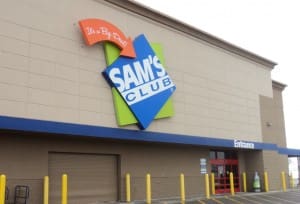 One of the most discussed topics in supply chain management today is the “Amazon Effect.” Clearly, the Amazon business model has affected many industries, including retail, manufacturing and distribution. Consumers now expect — and get — free next-day or second-day delivery on everything from electronics to shoes. To ask your customers to accept anything less in an Amazon world would be like telling your teenager that their iPhone is going away, but they are welcome to share a landline with the rest of the family. In short, the business environment has changed and for the foreseeable future, there is no going back.
One of the most discussed topics in supply chain management today is the “Amazon Effect.” Clearly, the Amazon business model has affected many industries, including retail, manufacturing and distribution. Consumers now expect — and get — free next-day or second-day delivery on everything from electronics to shoes. To ask your customers to accept anything less in an Amazon world would be like telling your teenager that their iPhone is going away, but they are welcome to share a landline with the rest of the family. In short, the business environment has changed and for the foreseeable future, there is no going back.
So, how do companies develop strategies to maintain a competitive edge now? Many successful firms are leveraging a page from the Amazon playbook and investing in technology. A Transportation Management System (TMS) is a good first step to reduce cost, gain efficiency and optimize your supply chain.
Why companies invest in TMS solutions
Companies that implement TMS solutions are looking for certain capabilities: maintaining relationships with carriers; improving supply chain management and effectiveness; streamlining operations; adding efficiency and reliability; and accessing more accurate and up-to-date information to enhance strategic decision-making. For example, the ability to analyze the freight spend down to a single customer, at an order or even at a product level, can be a key input to developing competitive product pricing and identifying opportunities for change.
Additionally, TMS solutions help with the customer experience. Improving customer satisfaction is the key to growth. It is predicted that by 2020, customer experience will be more important than price, product or brand choice as a differentiator in purchasing decisions. Having insight to TMS-produced data might be the difference between a happy or unhappy customer whether that customer is a shipper, manufacturer, or end-consumer.
What TMS Provides:
Automation
One benefit to be gained from a TMS is automation. Attack anything that is manual and inefficient and automate it. In transportation management, that often begins with freight sourcing or procurement. With a TMS solution, you can significantly reduce the time and resources spent on the bid process, while factoring in subjective issues as well as historical data to rate carriers. Being able to evaluate carriers based on past performance with your shipments makes a big difference. Sourcing all modes through one platform is a tremendous time saver and very important as companies are looking at more home deliveries than ever before.
An added byproduct of automation can be found in embedded analytics. This essentially is bringing intelligence into the automation to allow the system to learn, make recommendations and take actions as it gains knowledge of preferences and priorities.
Control Tower Visibility and Optimization
A TMS provides control tower visibility across your entire transportation network enabling faster access to the status of freight, greater insight into spot and contractual rates, and opportunities for optimization. For example, with this broad view from a single platform you may be able to combine multiple less-than-truckload (LTL) shipments into a single truckload (TL), reducing costs while ensuring delivery expectations within parameters of cost are met.
With a fleet management solution, you can also compare using a private fleet versus contracted carriers for specific moves. Because many industries and virtually every mode of transportation is subject to some level of regulation, an advanced TMS fleet system can also help you maintain compliance status for drivers and equipment in one place, with automatic notification supporting management by exception.
Because many industries and virtually every mode of transportation is subject to some level of regulation, an advanced TMS fleet system can also help you maintain compliance status for drivers and equipment in one place, with automatic notification supporting management by exception.
Collaboration and Communication
As companies are making smaller, more frequent deliveries, more businesses are adopting regional or even local distribution models since Amazon often requires local pickups. This has led to an entirely different view of inventory management by many companies. In the recent past, businesses operated in lean, just-in-time environments, maintaining as little inventory as possible.
A TMS also has a role to play in inventory management by building a bridge between the order management system and warehouse management. It sounds a little contradictory that a TMS can simultaneously reduce resources and improve collaboration but it’s true. When you integrate one platform like a transportation management system into your organization, the effects touch several departments depending on the breadth of your company.
From scheduling warehouse workers to optimizing routes, the right TMS can serve as one platform that all employees can work from. In doing so, strength is added to inter-department management and your co-workers are equipped to rapidly identify problems, move through processes faster and mitigate decision-making risk while adding increased visibility to the entire supply chain. And, advanced TMS solutions integrate seamlessly with many WMS systems and other tools used by shippers or 3PLs.
Why companies need to act now
With Amazon challenging established past best practices and expectations of supply chains, and TMS becoming more advanced and readily available due to the increase of cloud-based systems, now is the time to leverage technology to be more competitive. Transportation comprises the largest percentage of logistics expenses for the typical company, so integrating a full-featured TMS into a firm’s overall supply chain management approach not only makes sense; it’s an imperative in today’s fast-paced environment.
While reducing freight costs is a standard value proposition for TMS, there are many other forms of direct and indirect ROI that such solutions present, including higher customer satisfaction, improved supply chain visibility, and enhanced operational efficiencies. The value gained from having better data, improving service levels, enhancing in-transit visibility, and managing transportation operations by exception are vital to ensuring continuous improvement and competitiveness. And, these benefits are significant, with or without Amazon or the next market disruptor as part of the equation.
Karen Sage is MercuryGate’s Chief Marketing Officer (CMO) responsible for the company’s global marketing, communications, sales enablement, and go-to-market efforts. She is a veteran with 20+ years of experience in business-to-business marketing and communications helping several industry leaders launch disruptive new categories, accelerate revenue growth, build leadership brands, and establish marketing organizations that scale globally. She comes to MercuryGate most recently from the spend management solution provider, SciQuest. Prior to SciQuest, she was at CA Technologies where she served as vice president of marketing leading rapid growth initiatives. Her experiences leading growth also include multiple leadership roles during a 15-year stint at Cisco. Karen started her career having invented the NETSYS Performance tools at NETSYS Technologies, Inc., which was acquired by Cisco in 1996.






















